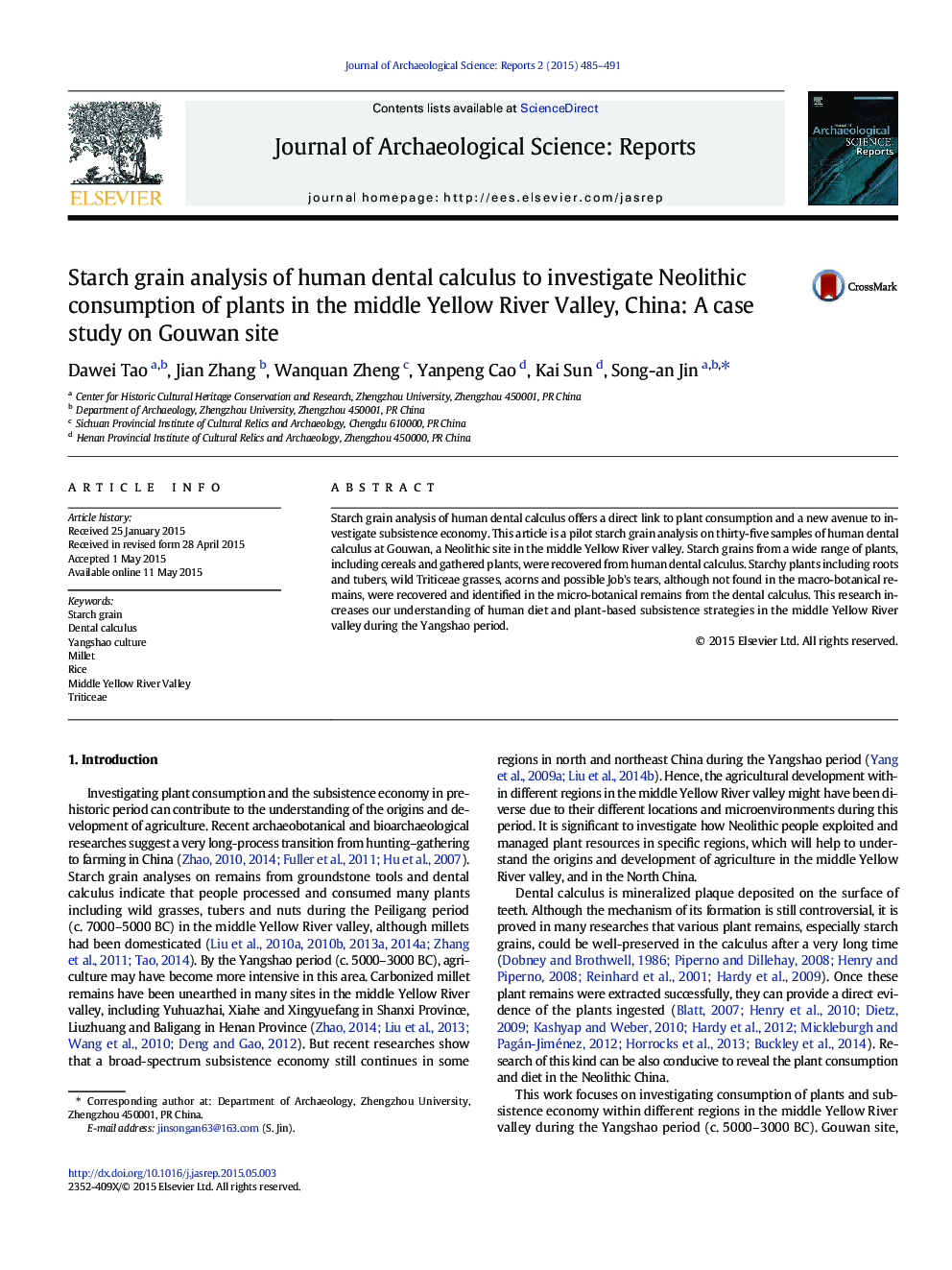| Article ID | Journal | Published Year | Pages | File Type |
|---|---|---|---|---|
| 7446575 | Journal of Archaeological Science: Reports | 2015 | 7 Pages |
Abstract
Starch grain analysis of human dental calculus offers a direct link to plant consumption and a new avenue to investigate subsistence economy. This article is a pilot starch grain analysis on thirty-five samples of human dental calculus at Gouwan, a Neolithic site in the middle Yellow River valley. Starch grains from a wide range of plants, including cereals and gathered plants, were recovered from human dental calculus. Starchy plants including roots and tubers, wild Triticeae grasses, acorns and possible Job's tears, although not found in the macro-botanical remains, were recovered and identified in the micro-botanical remains from the dental calculus. This research increases our understanding of human diet and plant-based subsistence strategies in the middle Yellow River valley during the Yangshao period.
Related Topics
Social Sciences and Humanities
Arts and Humanities
History
Authors
Dawei Tao, Jian Zhang, Wanquan Zheng, Yanpeng Cao, Kai Sun, Song-an Jin,
